- Category
- War in Ukraine
Today, Ukraine Honors Its Fallen Defenders on the National Day of Remembrance
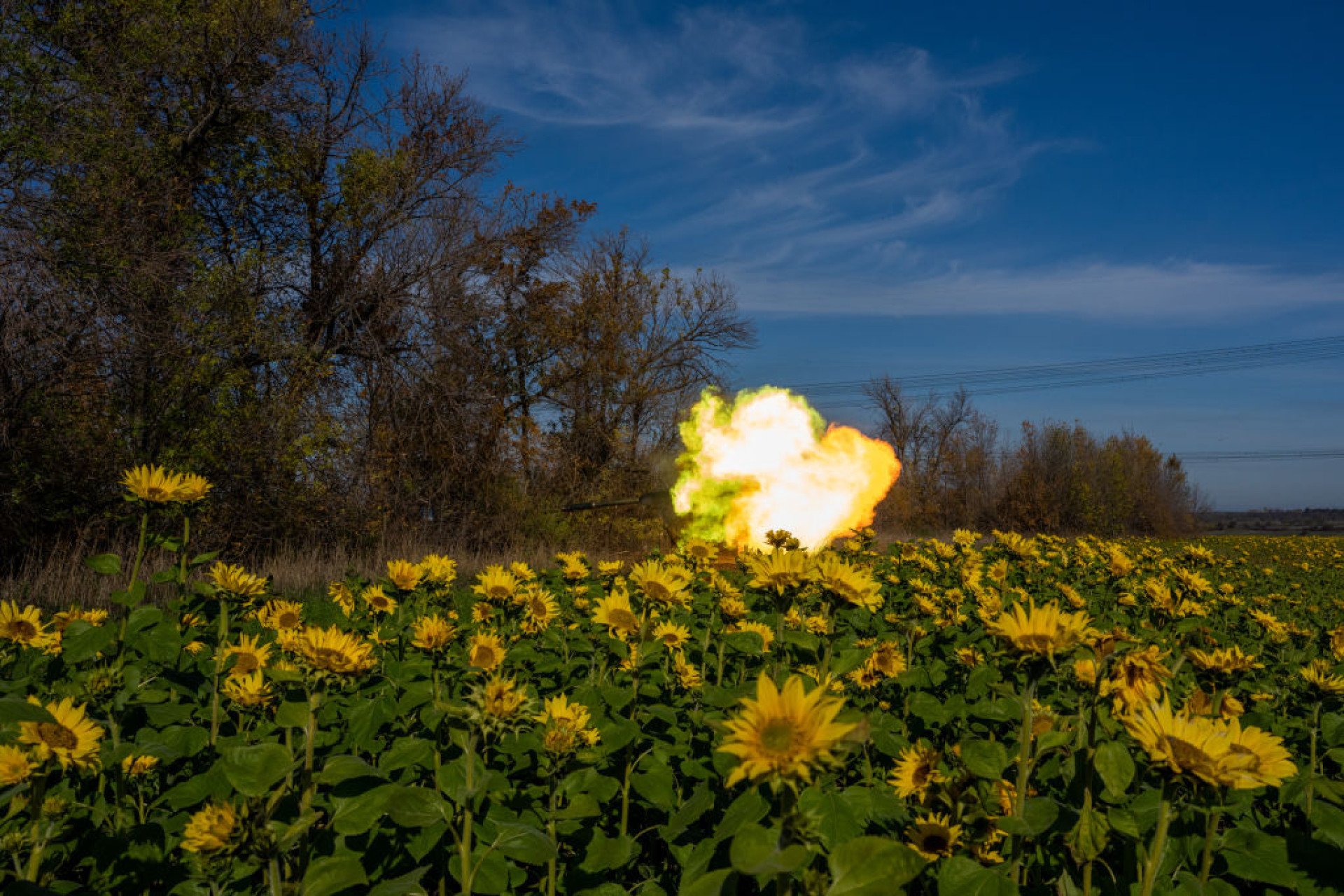
On the 29th of August, Ukrainians commemorate the Day of Remembrance of the Defenders of Ukraine. On this day, ten years ago, the Ukrainian army suffered its heaviest losses in the Donbas region during the withdrawal from the Ilovaisk encirclement.
The Battle of Ilovaisk, a key event in the early stages of the Russian war against Ukraine, unfolded in August 2014. On August 29, 2014, the Russian forces entrapped and opened fire on Ukrainian soldiers in sunflower fields as they attempted to evacuate through the “green corridor” that was promised by the Russian army.
On that day 366 Ukrainian soldiers were killed, 429 were wounded, 158 went missing, and 300 were captured.
With time, the sunflower became the flower that Ukrainians use to commemorate its fallen defenders, and with time, it became a symbol of the Day of Remembrance.
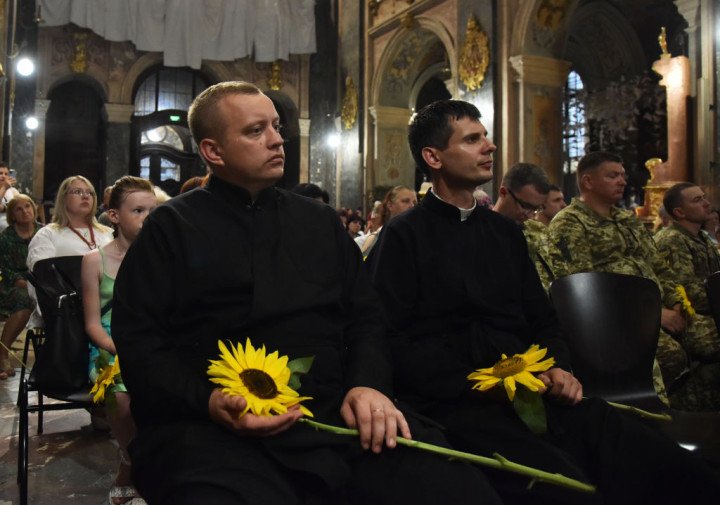
Commander-in-Chief of the Armed Forces Oleksandr Syrskyi emphasized the significance of this day, stating that it will forever remind Ukraine of the treachery and deceit of Russia, a nation that cannot be trusted.
“Ilovaisk is not only a tragic event in the history of Ukraine, but also a chapter of Ukrainian resilience, a testament to the courage and heroism of our military.”
Syrskyi further reflected on the events of that day: “Let’s remember that despite the loss and betrayal by the enemy, our soldiers did not surrender; they fought their way out of the trap and continued the struggle. This day will always remind us of the insidiousness and treachery of the Russian aggressor, that any negotiations with terrorists and murderers are mortally dangerous, and that they cannot be trusted.”
Burial traditions of the Cossack era to modern days
Soldiers have always been held in high regard. Their burial rites, both historically and in the present, are rich with symbolic actions that aim to rectify the disruption of traditional death rituals.
On July 2, 2021, the Ukrainian Parliament approved a new military burial ceremony, drawing from both Ukraine’s historical traditions, such as those from the Cossack era and the Liberation Struggles of the early XX century, as well as modern practices from foreign militaries, including those of the United States, Israel, Poland, Turkey, and Belgium.
Traditional elements such as the tolling of the church bell, the solemn procession to the burial site, and the wake have been preserved. A newer practice is the placement of military chevrons on the graves of fallen soldiers.
When a soldier returns to his land “on a shield,” compatriots honor the funeral cortege by forming a living corridor, often kneeling before the procession.
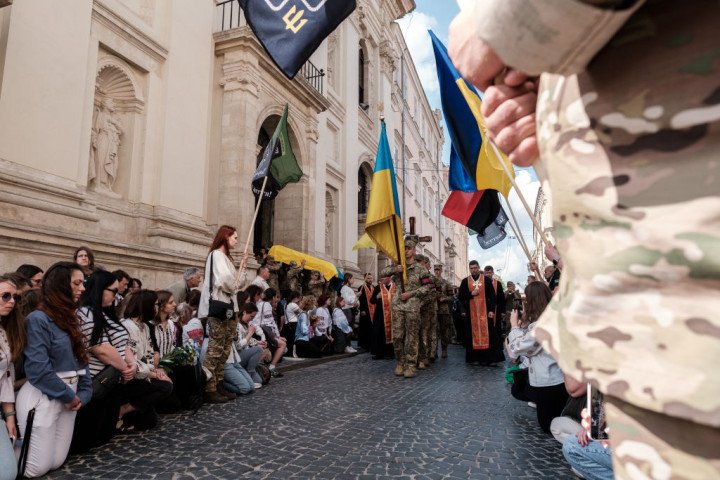
This custom traces back to Cossack times. It is believed that during the funerals of fallen comrades, Cossacks would kneel on their left knee and raise their sabers as a symbol of respect for those who sacrificed their lives for Ukraine’s freedom. Alongside the military escort, it was customary for Cossacks to ring church bells and fire cannons and rifles as part of the solemn farewell.
The tradition of honoring fallen soldiers is so deeply ingrained that even passersby in the city kneel as the funeral procession drives by, joining in the gesture of respect and mourning.
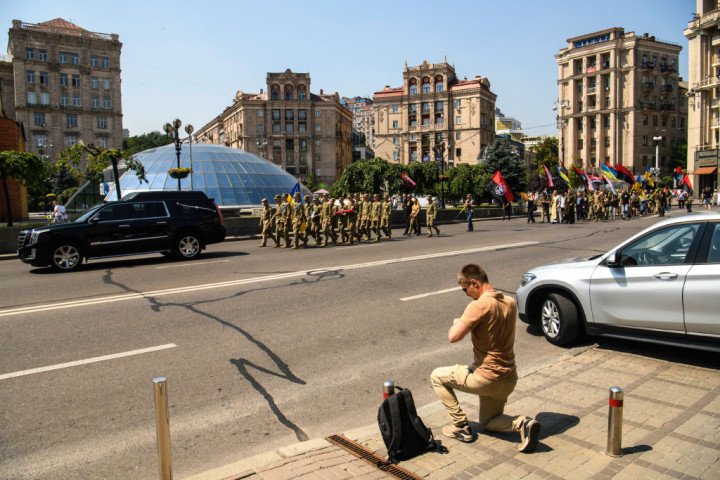
The custom was reintroduced in June 2022 and endorsed by the General Staff of the Armed Forces of Ukraine on August 11 of the same year.
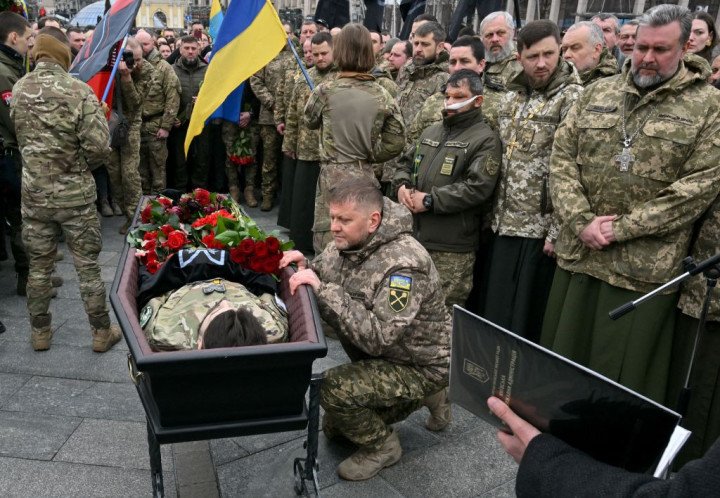
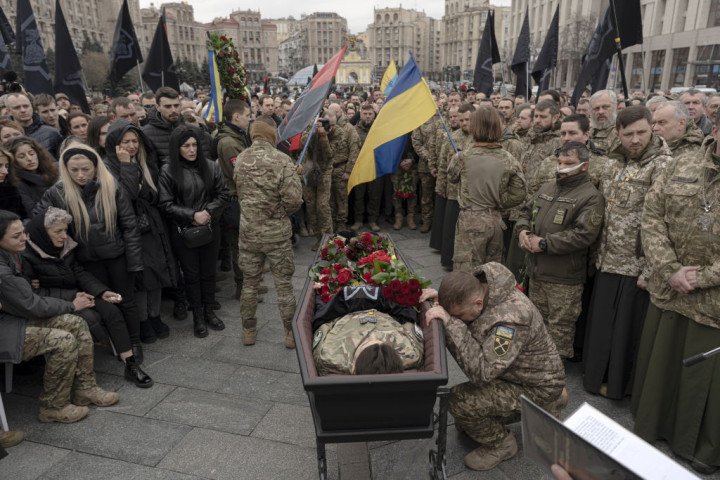
Modern military funerals are marked by the presence of the national flag of Ukraine, the flag of the military unit, the red and black flag, and a red cloth, in which according to Cossack custom, the deceased’s body was wrapped.
Today, before burial, the national flag is unfurled to the sound of the Ukrainian national anthem, held over the coffin, and then presented to the close relatives of the deceased. If a Cossack flag is also used, it is left in the coffin, unlike the national flag.
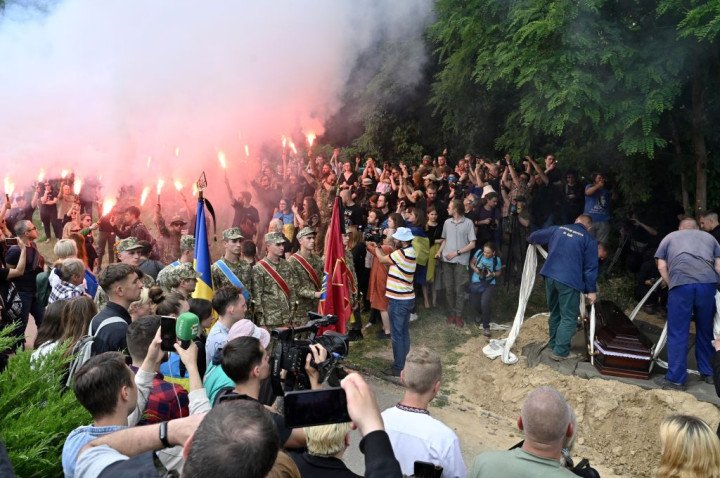
Another modern attribute is the portrait of the deceased, which is either carried at the front of the funeral procession or placed on the windshield of the car in the funeral cortege.
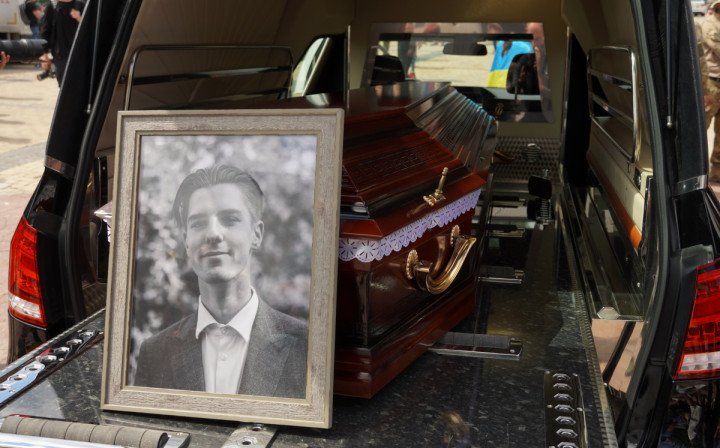
Since 2021, the composition of the funeral ceremony participants has also been updated. Now it includes the head of the post office, an administrator, a military band, a guard of honor, a funeral detail, a salute unit, and flag-bearing groups—one carrying the national flag of Ukraine and another bearing the flag of the military formation or state body.
Some soldiers, who lost their lives in the war, have been now burried in the historic Field of Mars in Lviv, adjacent to the Lychakiv Cemetery.
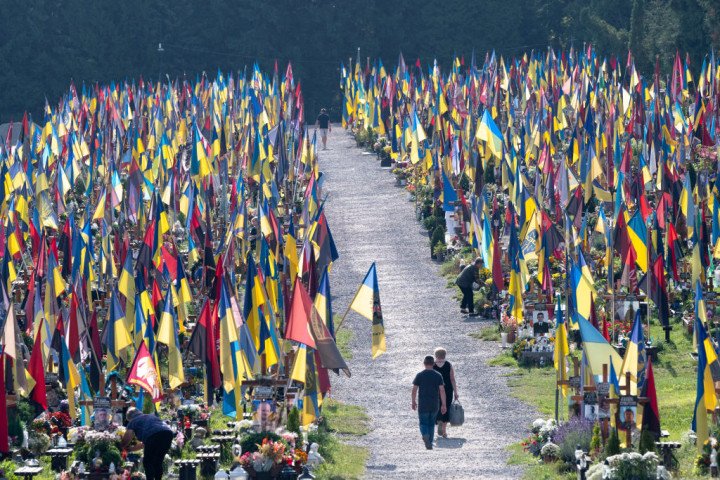
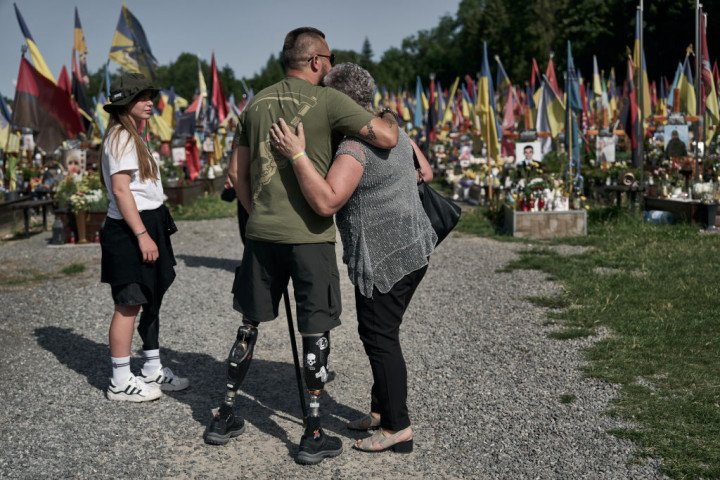
The history of Lviv’s Field of Mars dates back to the early 20th century, originally serving as a burial ground for soldiers of the Austrian army and their Allies who perished in World War I. By 1927, nearly 5,000 individual graves were located there.
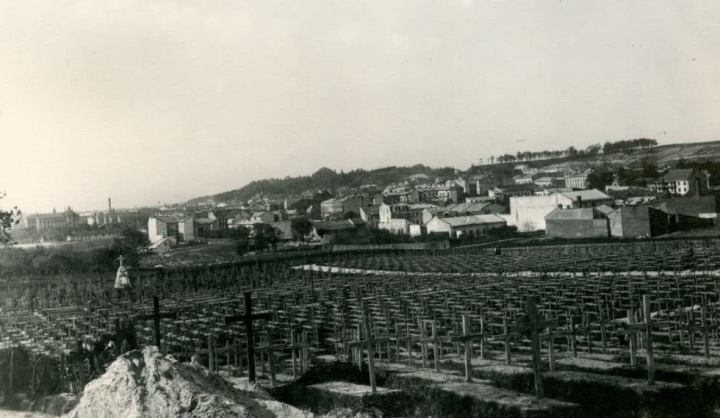
In 1946-1947, the Soviet authorities exhumed the bodies and repurposed the site to create a cemetery for Soviet and the People’s Commissariat for Internal Affairs (NKVD) soldiers. In the 1970s, they established a memorial on the Field of Mars, where they also reburied victims of Soviet terror from Zamarstynivka prison.
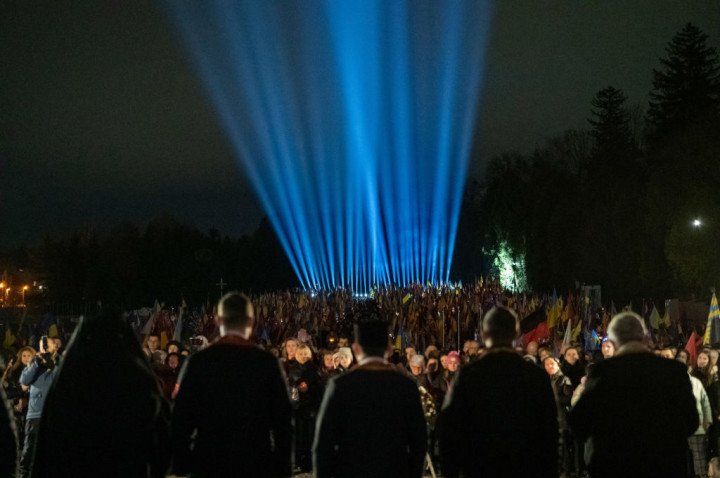
Memorial Table
Ukraine will observe the Day of Remembrance of the Defenders with a poignant initiative called the “Memorial Table.” Participating restaurants and cafes across the country will reserve one table for the entire day, symbolically honoring the fallen Defenders of Ukraine.
The initiative was first launched in 2023 by Maria Grabar, a native of Uzhhorod, Ukraine. Maria created the campaign in memory of her partner Ilya Grabar. Ilya, who began his service in the 101st Separate Brigade of the Territorial Defense Forces, lost his life in battle defending Ukraine.
On August 29, restaurants and cafes participating in the “Memorial Table” initiative will set aside a table, prepared as if awaiting a guest who will never arrive. This reserved table serves as a solemn tribute to the fallen.
Maria Grabar explained that the idea was inspired by an American military friend, who shared how the United States observes Memorial Day. In the US, a table is set both at home and in public places to honor soldiers who have died in service to their country. Maria adapted the concept to reflect Ukrainian culture, designing the signs and presentation, and incorporating symbols significant to Ukraine.
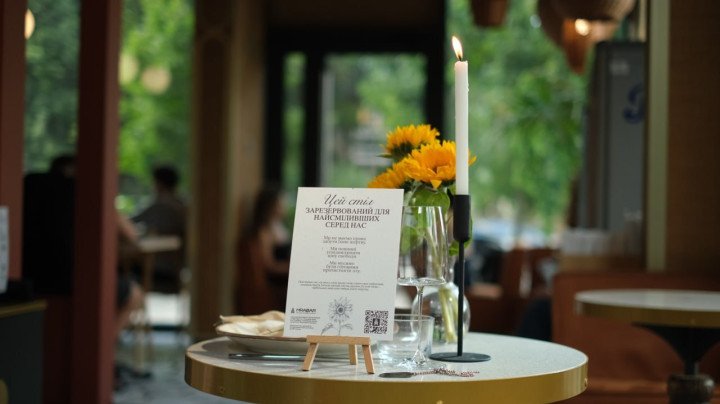
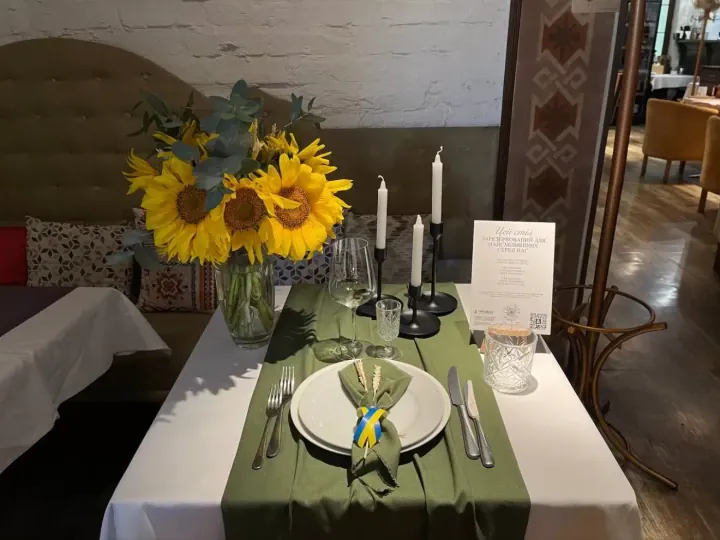
“For example, sunflowers are a symbol of the Day of Remembrance of Defenders, and a candle represents a life cut short. In the US, a red rose symbolizes spilled blood, salt represents the tears of loved ones, and a lemon signifies their bitter fate,” Maria explained.
Her idea quickly gained traction when she shared it on social media last year. In 2023, the “Memorial Table” campaign saw participation from 100 establishments.
This year, the initiative is being organized in partnership with the Memorial platform, with the aim of making it a nationwide tradition that endures year after year.
The primary purpose of the “Memorial Table” initiative is to honor the fallen heroes to whom Ukraine owes its survival and continued existence. It also serves as a reminder to those living in relatively peaceful conditions that their safety is due to the ultimate sacrifices made by the Defenders of Ukraine.
-ba02b3bc86f0b624f99115809a6a34d0.jpg)
-c42261175cd1ec4a358bec039722d44f.jpg)
-46f6afa2f66d31ff3df8ea1a8f5524ec.jpg)
-6359eca46c72bde40a90abaaadd6eaa8.png)
-29a1a43aba23f9bb779a1ac8b98d2121.jpeg)


-206008aed5f329e86c52788e3e423f23.jpg)